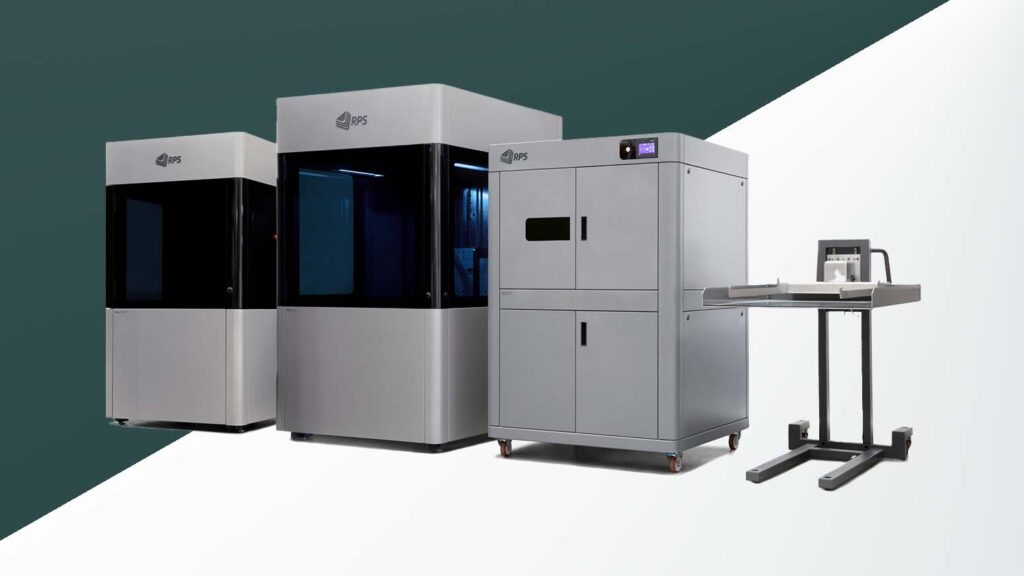Stratasys is to fully enter the SLA 3D Printing market, having announced its acquisition of UK-based RP Support Ltd. (RPS), a provider of industrial stereolithography 3D printers.
RPS’ technology, headed by its flagship Neo line of SLA 3D Printers, gives Stratasys a full suite of solutions across the entire product development, from concept modelling to manufacturing.
The addition brings ‘dynamic laser beam technology’ that offers build accuracy, feature detail, and low variability across the full extent of the machine’s large build platform.
“One of the company’s goals is to be the first choice 3D printing polymer provider for designers, engineers and manufacturers, so you could wrap that up and say: we want to be a one-stop shop.” said Stratasys MD of stereolithography products Daniel Thomsen.
Thomsen added that the company was looking to fill the key gaps in its portfolio – like with its recent acquisition of DLP 3D printing technology provider Origin – and strengthen others, such as its SLA offering.
RPS had its beginnings as a service and support provider for SLA 3D printers from other vendors, before developing its own technology off-the-back of knowing where the weak points were for users, and having the skilled people in house to build a new system.
Thomsen explained: “We recognise that [the RPS team] have been in the business for 31 years, and have firsthand experiences of the challenges with stereolithography – and I’d even say some of the struggles – so the machine that they have developed and built fixes many, many issues currently with stereolithography.
“In evaluating the technology, we really put the machine through its paces. We put builds on the machine that I would call ‘suicide builds’ and even they were very successful and none of them failed!”
The Stratasys SLA family of products has long been a behind closed-doors bureau service, used at Stratasys Parts Direct, despite the public launch of its V650 Flex system in 2019.
Thomsen revealed that the newly acquired Neo line of products would eventually replace the V650 Flex systems, and would maintain the current open resin policy of those machines, continuing to support RPS’ current materials supplier DSM.
At present the Neo 3D printers provide users with a wide range of material options, with properties such as chemical resistance, heat tolerance, flexibility, durability, and optical clarity, and this is something Stratasys was keen to point out as a key selling point of the Neo range, and that it wishes to ‘break the stranglehold’ over SLA materials and allow the technology to achieve its full potential.
Large parts, built within a 800 x 800 x 600 mm build chamber, can be produced despite the relatively small footprint of the 3D printer, which sits well with Stratasys’ plans to increase its manufacturing production capabilities.
“As businesses accelerate their embrace and adoption of additive manufacturing, our goal is providing our global customers with the world’s best and most complete polymer 3D printing portfolio,” said Stratasys CEO Yoav Zeif.
“We believe the Neo products are superior relative to other solutions currently available in the market due to an open choice in resins, low service requirements, and reliable and accurate builds with simple day-to-day operation. With access to our strong global channels and our innovative GrabCAD software, we will bring RPS’ innovative products to many more manufacturing organisations.”
“We developed the Neo line to raise the industry standard for the next generation of large-frame industrial stereolithography 3D printers,” added RPS Director David Storey.
“I’m looking forward to continuing to develop this best-in-class technology with the Stratasys team as we bring our products to a broadened global audience.”
The development of Stratasys’ SLA business looks set to remain in the UK, which is further positive news for existing RPS customers – most of which are on these fair shores, and include among others a number of F1 teams and Clarks footwear.
The global addressable sector for industrial stereolithography systems is estimated by Stratasys at approximately $150 million and is expected to continue growing at a rate of approximately 10% per year.
Stratasys expects this acquisition to be ‘slightly accretive to revenue’ and ‘non-GAAP per-share earnings’ by the end of 2021.






